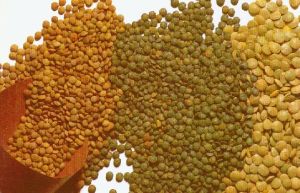
Introduction
Molybdenum (Mo) is an essential trace element for virtually all life forms. It functions as a cofactor for a number of enzymes that catalyze important chemical transformations in the global carbon, nitrogen, and sulphur cycles.
Molybdenum is concentrated primarily in the liver, kidney, bone, and skin. There is estimated to be approximately nine milligrams of molybdenum in the adult human body.
Food Sources
Legumes such as beans, lentils, and peas are the richest sources of molybdenum. Grain products and nuts are considered good sources while animal products, fruits, and many vegetables are generally low in molybdenum. Because the molybdenum content of plants depends on the soil molybdenum content and environmental conditions, the molybdenum content of foods can vary considerably between different geographic areas.
Some important food sources of Molybdenum
 |
 |
 |
 |
 |
|
Yeast
|
Lentils
|
Liver
|
Spinach
|
Green cabbage
|
 |
 |
 |
 |
 |
|
Whole grain bread
|
Brown rice
|
Kidneys
|
Red beans
|
Nuts
|
Recommended Dietary Allowance (RDA)
The European Union has not set an RDA for the general population. The US RDA for molybdenum is 43-45 µg/day for adults.
Inhibitors/stimulators:
The following food components have been found to stimulate the absorption of molybdenum:
Copper – Copper is an antagonist to molybdenum absorption.
Functions in the Body
The biological form of molybdenum present in almost all molybdenum-containing enzymes (molybdoenzymes) is an organic molecule known as the molybdenum cofactor. In humans, molybdenum is known to function as a cofactor for three enzymes.
Sulphite Oxidase – catalyzes the transformation of sulphite to sulphate, a reaction that is necessary for the metabolism of sulphur-containing amino acids such as cysteine.
Xanthine Oxidase and Aldehyde Oxidase – catalyze hydroxylation reaction involving a number of different molecules with similar structures. Xanthine oxidase catalyzes the breakdown of nucleotides (precursors to DNA and RNA) to form uric acid, which contributes to the antioxidant capacity of the blood. Xanthine oxidase and aldehyde oxidase also play a role in the metabolism of drugs and toxins. Of these three enzymes, only sulphite oxidase is known to be crucial for human health.
Deficiency
Dietary molybdenum deficiency has never been observed in healthy people.
Toxicity
Symptoms of molybdenum toxicity include diarrhoea, depressed growth rate, and anemia. Gout-like symptoms may result from excessive intake. Molybdenum toxicity from food is highly unlikely though.
High levels of molybdenum intake can induce a high rate of copper excretion (due to the antagonistic effect the two minerals have on each other), which could possibly result in a copper deficiency.
A high intake of molybdenum can alter the activity of alkaline phosphatase, resulting in certain bone abnormalities. Alkaline phosphatase enzymatically releases phosphate groups from the molecule glucose-1-phosphate, thereby producing high levels of inorganic phosphate; phosphate is necessary to produce hydroxyapatite crystals in bone.
Regulation
Molybdenum absorption occurs readily in gastrointestinal tract, and excretion occurs primarily via the urine.
 手机版
手机版








